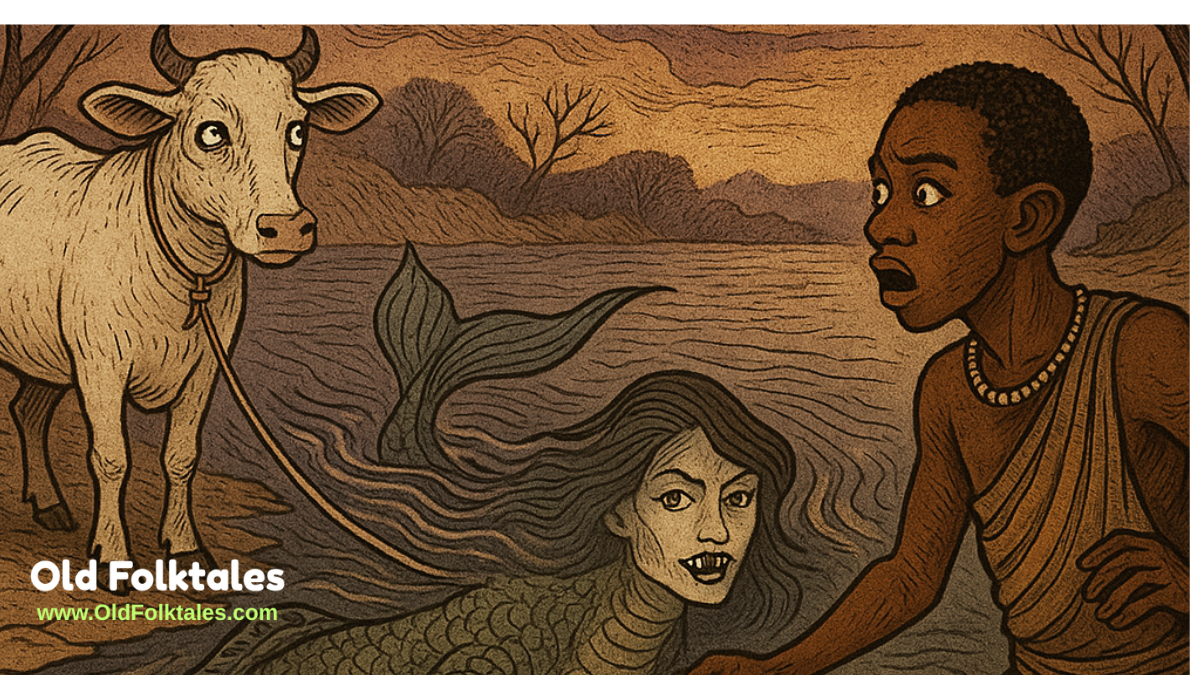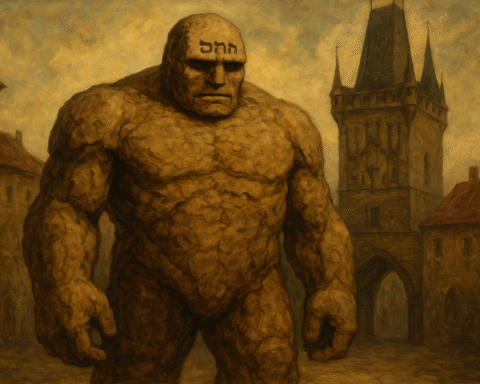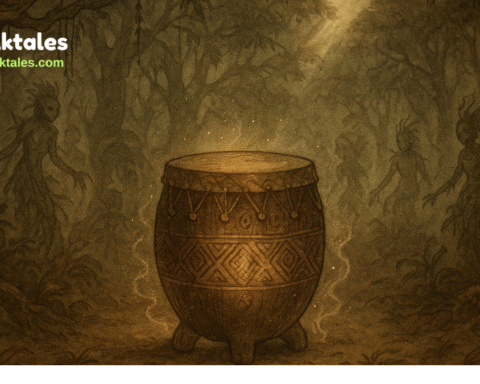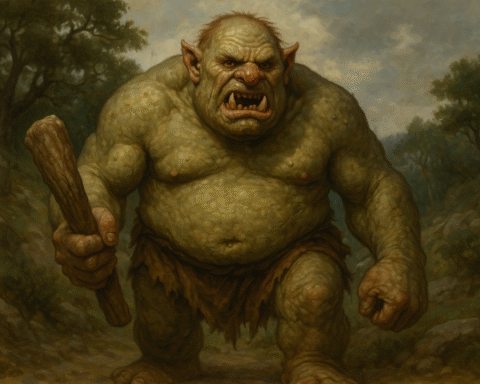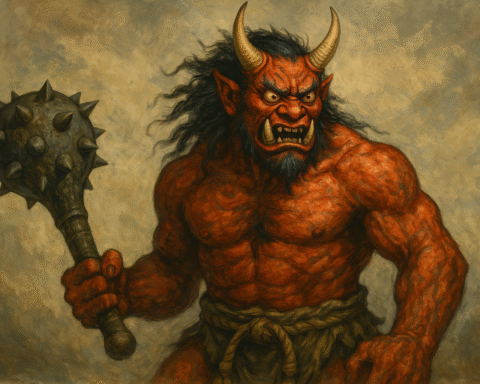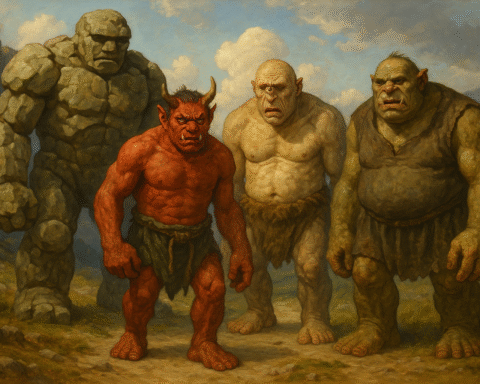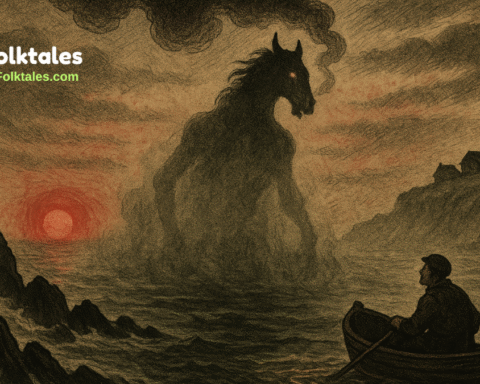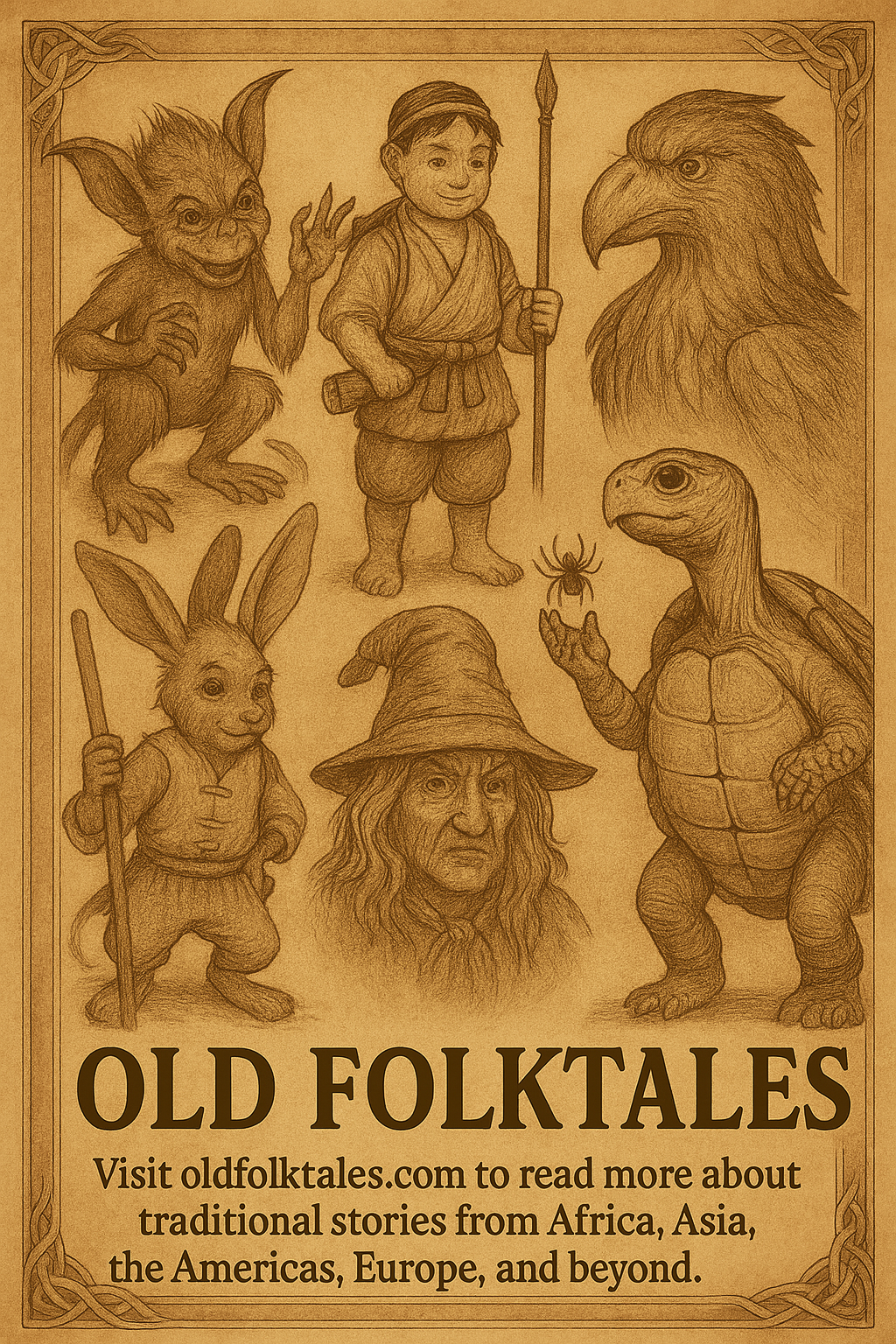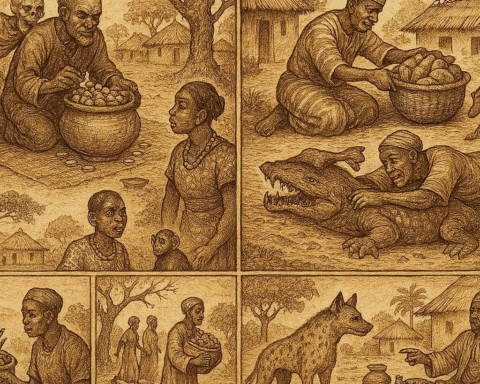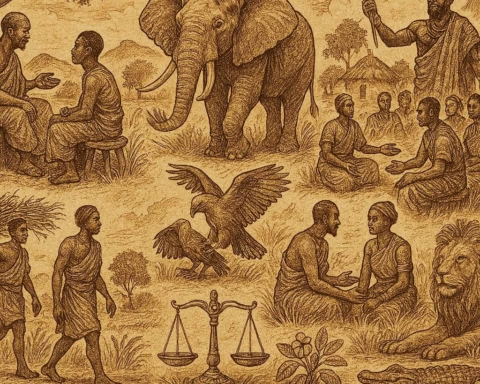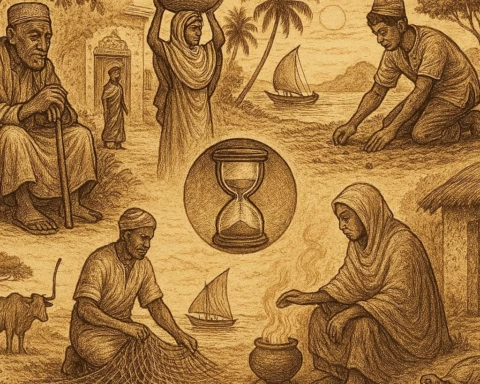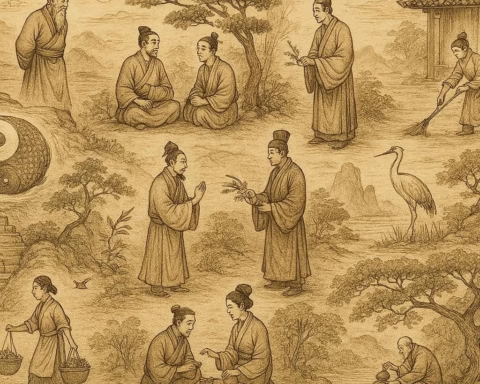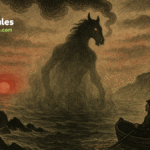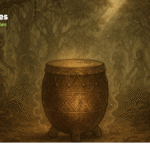Long ago, near the winding banks of the Limpopo River, the Venda people told stories that echoed like drumbeats through the valleys. Among them was a tale whispered only at dusk, the story of the Water Cow.
This creature, called Mmamoga in the old tongue, was no ordinary beast. It was said to live deep beneath the river’s currents, where the moonlight never reached. Mmamoga could take the form of anything, a lost cow, a laughing child, or a beautiful woman. Those who followed it often vanished, never to be seen again.
In a village nestled on the river’s edge lived a boy named Lufuno. He was known for his bravery but also for his stubbornness: “There is no monster in the river,” he scoffed whenever the elders warned the children. “Only shadows and stories.”
One dry season, the Limpopo shrank, revealing sandbanks and smooth stones. The fish grew scarce, and the village worried. Lufuno, eager to prove himself, went to fish alone, right where the river grew deepest.
As he cast his net, he heard a soft moo.
A lone white cow stood by the water’s edge, its eyes strangely human. It seemed lost, gentle, and harmless. Lufuno approached it, thinking, This cow must have escaped. I will lead it home and be praised.
He tied a reed rope around its neck.
But the moment he tugged, the cow resisted. Its eyes turned black. Its hooves dug into the mud. Then, it laughed, not like a cow, but like a woman, high and cold.
Lufuno froze.
The cow’s form shifted, its body rippled like water. From it rose a creature with the body of a crocodile, the tail of a fish, and the face of a beautiful woman with teeth like carved stone.
It was Mmamoga.
“You wanted proof,” it hissed. “Come and see.”
The river exploded in a splash.
Lufuno was dragged under.
Below the surface, he saw faces, others who had followed the water cow before him. Their eyes were wide with regret. But unlike them, Lufuno had brought something the spirit did not expect: a sacred necklace made of river bones, blessed by his grandmother for protection.
As the creature reached for his heart, the necklace glowed. The spirit howled. The bones cracked open a whirlpool that flung Lufuno back to the surface.
He awoke gasping, alone on the riverbank. The cow was gone. The sun was rising.
He ran home, his pride left behind in the river’s depth.
From that day on, Lufuno never mocked the old tales. He became the village’s greatest storyteller, not because he read from scrolls, but because he had looked a legend in the eyes and lived to warn others.
Moral Lesson of The Water Cow of the Limpopo River
The tale of The Water Cow of the Limpopo River teaches that bravery without wisdom leads to danger. Elders pass down stories not for fear but for protection. When we ignore ancestral knowledge, we walk blindly into harm. But when we listen and prepare, even the deepest spirits cannot drown us.
Knowledge Check
- What lesson does “The Water Cow of the Limpopo River” teach readers?
The story teaches that ignoring the wisdom of elders can lead to dangerous encounters and that courage should always be guided by knowledge. - Who is the main character in “The Water Cow of the Limpopo River”?
The central figure is Lufuno, a brave but skeptical boy who learns the truth about the mythical water cow. - What is the Water Cow in the Venda folktale really?
The Water Cow is a shape-shifting river spirit that lures people to their doom, often appearing as a harmless animal or person. - How did Lufuno survive his encounter in the story?
He was saved by a sacred bone necklace blessed by his grandmother, which protected him from the creature’s power. - What cultural group is “The Water Cow of the Limpopo River” from?
This folktale originates from the Venda people of South Africa, who live near the Limpopo River. - Why is “The Water Cow of the Limpopo River” still important today?
It reminds modern readers about the importance of respecting traditional knowledge and being cautious even when things seem harmless.
Cultural Origin:
This story comes from the traditional oral folklore of the Venda people of South Africa, who have long believed in river spirits and transformation beings that dwell in the Limpopo River.
